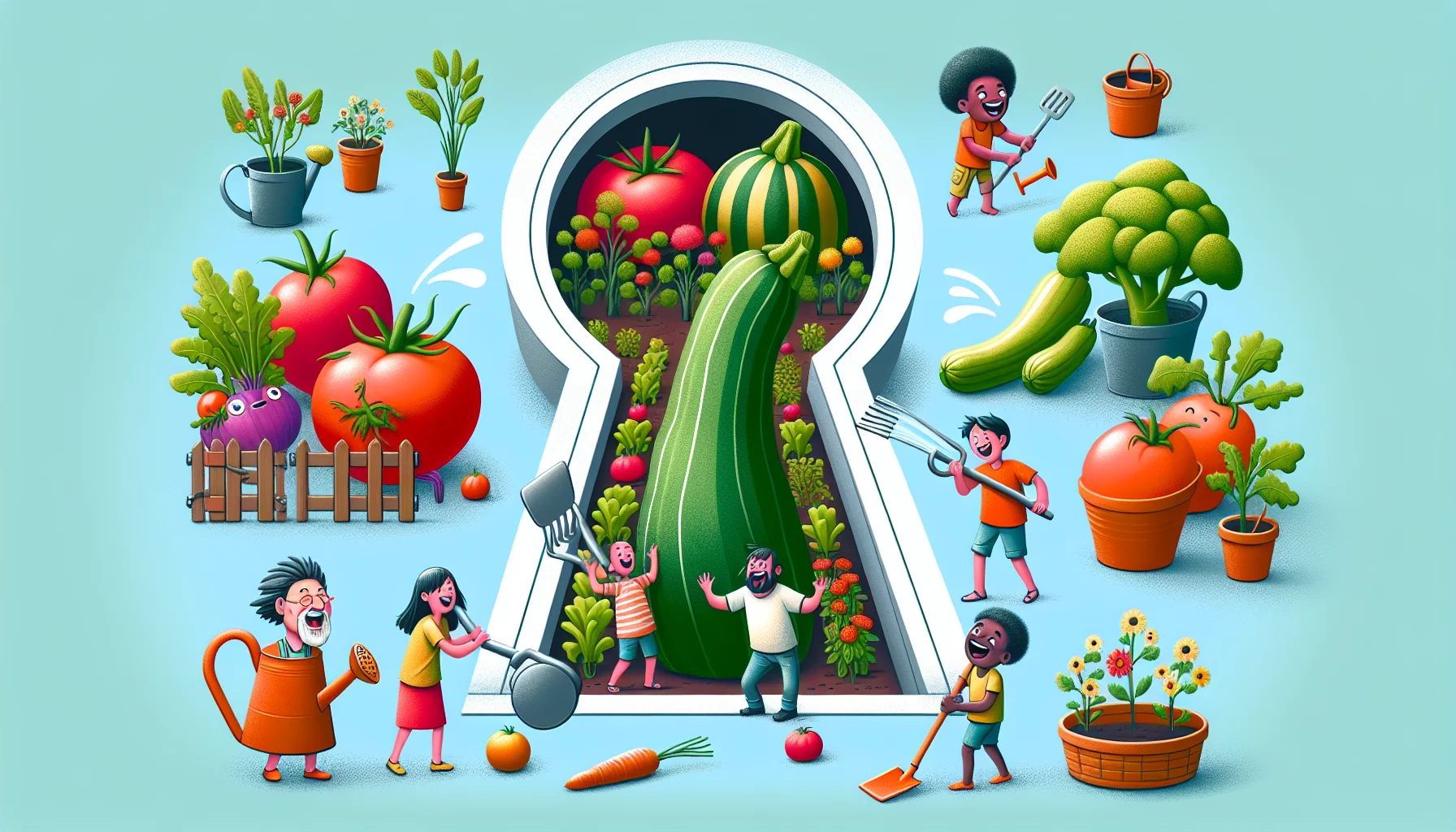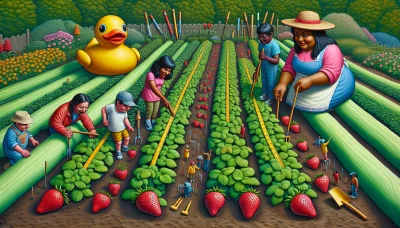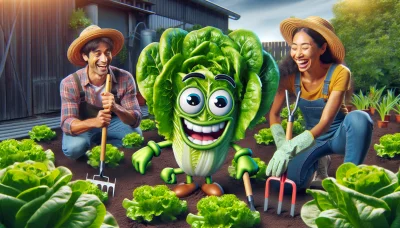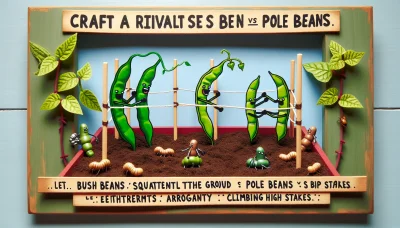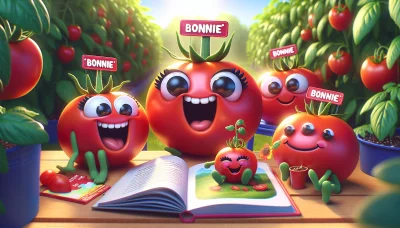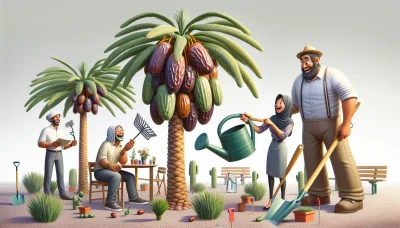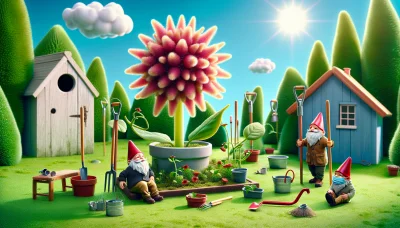Keyhole garden design Quiz
Test Your Knowledge
Question of
Introduction to Keyhole Garden Design
Keyhole gardens are an innovative and sustainable approach to gardening that originated in Africa. This design is characterized by a circular shape with a "keyhole"-shaped indentation on one side, allowing easy access to the center compost basket. This central basket is where kitchen scraps, yard waste, and other organic materials are placed to decompose, thereby enriching the soil with nutrients. Keyhole gardens are highly efficient in areas with poor soil quality and limited water resources. They maximize space by vertically layering soil, allowing for high-density planting. The design promotes water conservation, as the central compost basket distributes moisture and nutrients directly to the roots of the plants. This method reduces the need for external fertilizers and watering, making it an excellent model for sustainable gardening practices. The keyhole garden design is adaptable to various climates and can be customized to fit individual gardening needs, making it a versatile option for gardeners worldwide.
The History of Keyhole Gardens
Keyhole gardens first emerged in Africa, designed to combat adverse growing conditions and improve food security. The concept, which mimics a keyhole shape when viewed from above, integrates a central composting basket and an efficient watering system to nourish the garden. This design not only conserves water but also recycles kitchen waste, making it a sustainable option for arid regions. Over time, the keyhole garden has evolved and spread globally, adapting to various climates and settings. Its versatility and sustainability have made it a popular choice among gardeners looking for efficient ways to grow food in limited spaces.
Step-by-Step Guide to Creating Your Keyhole Garden
- Choose the Right Location - Select a sunny spot that receives 6-8 hours of sunlight daily.
- Mark the Garden's Shape - Use stakes and string to outline your keyhole garden's circular shape.
- Build the Outer Wall - Use stones, bricks, or recycled materials to construct the outer wall.
- Create the Keyhole Path - Cut a notch into the circle for easy access to the center compost basket.
- Install the Compost Basket - Place a wire or woven basket in the center for composting kitchen scraps and yard waste.
- Layer the Garden Bed - Start with a layer of cardboard or newspapers, followed by alternating layers of green and brown organic materials.
- Fill with Soil - Top the layered materials with rich garden soil up to the height of the outer wall.
- Plant Your Garden - Sow seeds or transplant seedlings into the garden, arranging taller plants towards the center.
- Water Regularly - Ensure the garden is well-watered, focusing on the compost basket to help distribute nutrients.
- Maintain and Enjoy - Continue to add compost materials to the center basket and enjoy your keyhole garden's bounty!
Best Plants for Your Keyhole Garden
Keyhole gardens are designed to maximize space and efficiency, making them ideal for growing a variety of plants. These gardens are particularly good for vegetables, herbs, and flowers that thrive in rich, well-drained soil and can benefit from the composting basket typically found at the center of a keyhole garden. Plants that do well in these conditions include those that are drought-resistant and nutrient-rich, as well as plants that can be harvested multiple times throughout the growing season.
Recommended Vegetables
- Kale
- Swiss Chard
- Carrots
- Beets
- Spinach
Recommended Herbs
- Basil
- Thyme
- Oregano
- Mint
- Parsley
Recommended Flowers
- Marigolds
- Nasturtiums
- Zinnias
- Sunflowers
- Lavender
Watering and Maintaining Your Keyhole Garden
Keyhole gardens are renowned for their efficiency and ease of maintenance, making them a favorite among gardeners. To ensure your keyhole garden thrives, it's essential to adopt best practices for watering, feeding, and maintaining it through the seasons. Begin by watering your garden early in the morning or late in the evening to minimize evaporation. A drip irrigation system or a soaker hose can provide deep, consistent moisture without over-saturating the soil. Feeding your garden with compost is crucial; regularly add layers to the central composting basket to nourish your plants. Seasonal maintenance includes mulching to retain moisture in summer and protect roots in winter, and rotating crops to prevent soil depletion and reduce pest buildup. By following these guidelines, your keyhole garden will remain productive and vibrant year-round.
Common Challenges and Solutions
-
Problem:
Poor Soil Drainage
Solution: Incorporate layers of gravel or sand at the bottom of the garden to improve water flow. -
Problem:
Nutrient Deficiency
Solution: Regularly add compost and organic matter to replenish and maintain soil fertility. -
Problem:
Pest Infestations
Solution: Use natural predators, barriers, or organic pesticides to manage and reduce pests. -
Problem:
Limited Space for Root Growth
Solution: Plan your garden layout to ensure there is enough room for the roots of larger plants or choose varieties that require less space. -
Problem:
Watering Challenges
Solution: Install a drip irrigation system or use a watering can to ensure even moisture distribution without overwatering. -
Problem:
Weed Overgrowth
Solution: Apply mulch around plants to suppress weeds and retain soil moisture.
Keyhole Garden Design Inspirations
Explore our curated gallery of keyhole garden designs. Each layout is thoughtfully crafted to inspire your next gardening project, showcasing a variety of sizes, ideal plants, and special features unique to each design.
| Design Name | Size | Ideal Plants | Special Features |
|---|---|---|---|
| Classic Circular | 6ft diameter | Vegetables, Herbs | Composting basket center |
| Urban Oasis | 4ft x 4ft | Herbs, Small Vegetables | Space-efficient, fits in small areas |
| Desert Bloom | 8ft diameter | Succulents, Drought-resistant plants | Low water use, desert adaptation |
| Perennial Paradise | 5ft x 5ft | Perennials, Flowering plants | Year-round blooms, pollinator-friendly |
